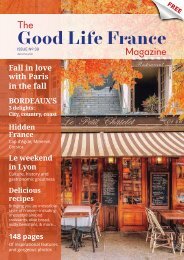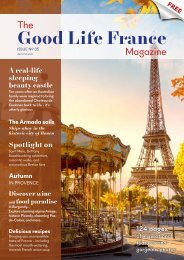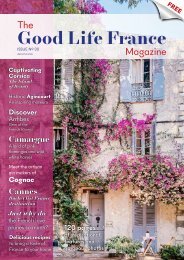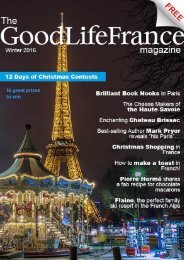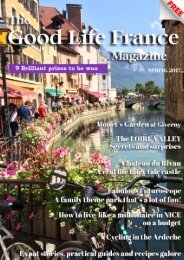Create successful ePaper yourself
Turn your PDF publications into a flip-book with our unique Google optimized e-Paper software.
Toulouse, Boigontie, Toulouse Tourist Office
I could see where the gibbets once were,
gates in the defence walls, and even the
places used as jails by the Catholic
Inquisitions.
And Paris – the city often features in your
books, another favourite?
Yes, I love Paris too, though my heart
belongs to the Midi. I met my husband when
I was at school, but we went to different
universities and our separate ways. Then,
years later, we met again on a train when he
was at that stage living in Paris. So it was
wonderful to discover the city through the
eyes of someone who lived there for several
years.
One of my favourite parts is Beaumarchais
and the area around Bastille. Quite a lot of
the early sections of The City of Tears, the
second in my The Burning Chambers Series,
are set in Paris - not least of all the most
notorious engagement of the French Wars of
Religion, the St Bartholomew's Day Massacre
of Huguenots by the French Crown in August
1572 - so I spent a fair amount of time there
when I was researching and writing last year.
It astonished me to realise how tiny Paris was
in the 16th century and suddenly the history
made sense - how, as the alarm bells rang out
on that fateful day in August, when
thousands of women, men and children
would be slaughtered, it would actually be
easy to close the city gates and trap everyone
inside.
When you think of Paris in the modern world,
you think that's impossible, it's too big. But
when I walked the footprint of the 16th
century city of Paris, I realised you could
easily go in half an hour from the city gates
to the west of the Right Bank, where
Catherine de Medici was building the
Tuilleries Palace, all the way to the Bastille in
the east.




